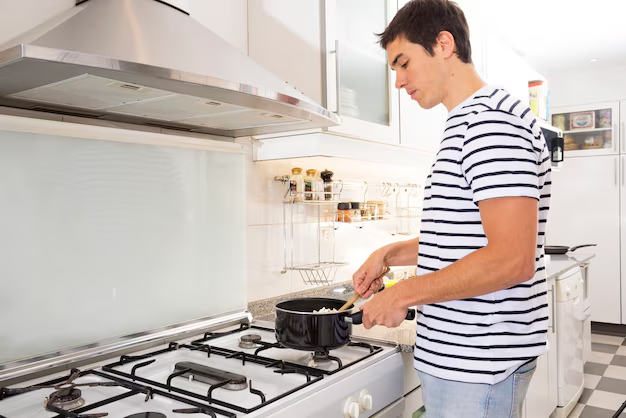How to Seamlessly Reverse Refrigerator Doors for Optimal Convenience
Opening your refrigerator should be a simple and hassle-free experience, but what if it's not? Perhaps it opens into a wall, or conflicts with cabinets, making your kitchen feel cramped. Reversing the doors on your refrigerator could be the straightforward solution you're looking for. Many modern refrigerators come with reversible doors, allowing you to change the side on which they hinge. This guide will walk you through the process of reversing your refrigerator doors, ensuring you can maximize both space and functionality in your kitchen.
Why Consider Reversing Your Refrigerator Doors?
Enhanced Accessibility and Space Efficiency
Changing the direction of your refrigerator door swing isn’t just about convenience; it’s about enhancing your kitchen’s layout and functionality. A door that swings the correct way can open up space, make your refrigerator more accessible, and possibly minimize the risk of bumps and scrapes in tighter quarters.
Improved Workflow
A kitchen’s workflow can become smoother when appliance doors open in the right direction. This change can lead to more efficient movement within the space, reducing the back-and-forth that often happens in a busy cooking environment.
Is Your Refrigerator Door Reversible?
Before diving into the how-to aspect, it’s crucial to check if your model is designed for door reversal. Most new refrigerators include reversible door hinges, but consulting your user manual or the manufacturer's details will provide confirmation. Older models may lack this feature, so confirming this step is important before you begin.
Tools You’ll Need 🛠️
To successfully reverse your refrigerator doors, you'll need a few essential tools:
- Phillips screwdriver: For removing screws from the hinges.
- Flathead screwdriver: It might be needed to pry certain components gently.
- Allen wrench: For adjusting the hinges.
- Putty knife: Useful for loosening gaskets.
- Masking tape: Helps you position parts correctly for reassembly.
Step-by-Step Guide to Reversing Refrigerator Doors
1. Prepare the Area
Start by clearing the area around your refrigerator. Shift any items obstructing access from its path and gather all necessary tools. Empty the contents of your refrigerator and freezer to prevent spills and ensure easier manipulation.
2. Remove the Top Hinge Cover
Find the top hinge of your refrigerator, which often has a cover held in place by screws or clips. Loosen the screws or gently pry off the cover using a flathead screwdriver. Keep all screws organized and labeled to ensure a smooth reassembly.
3. Detach the Refrigerator Door
Once the hinge cover is removed, unscrew the top hinge using your Phillips screwdriver. Lift the refrigerator door off the bottom hinge pin and place it on a padded surface to avoid damage.
4. Handle the Freezer Door
Repeat a similar process for the freezer door: remove the hinge screws, carefully detach the door, and set it aside.
5. Swap the Hinges to the Opposite Side
Now that both doors are removed, it's time to transfer the hinges to the opposite side. Models with reversible features typically have pre-drilled holes on both sides. Secure the hinges into the existing holes on the opposite side using your Phillips screwdriver.
6. Relocate the Door Handles
Your next step involves relocating the door handles. Unscrew the handles and attach them to the appropriate side that corresponds with the new swing direction. This is where your masking tape comes in handy for aligning them differently but precisely.
7. Reassemble the Doors
Replace the doors onto the new hinge locations. Begin with the freezer door first, as it usually offsets the weight distribution for easier alignment. Adjust the hinges with the Allen wrench to ensure the door swings evenly and smoothly.
8. Check the Door Seals
After reversing the doors, inspect the seals for any air gaps. Use the putty knife to adjust any loose gaskets. Ensuring a tight seal prevents energy wastage and maintains optimal cooling.
Common Challenges and Troubleshooting
Misaligned Doors
Doors must align correctly for a complete seal. If you notice misalignment, you may need to adjust the hinge screws until the doors sit parallel and close tightly.
Difficulty in Removing Handles
Handles that are difficult to remove can often be eased out with lubrication or by checking for hidden screws obscured by caps.
Seal Issues After Reversal
Seal issues can typically be resolved by adjusting the gasket or slightly repositioning the doors. Regularly checking the seals post-operation ensures energy efficiency and functionality.
When to Seek Professional Help
Though reversing refrigerator doors can often be accomplished with a DIY approach, sometimes seeking professional help is necessary. If you face persistent alignment or sealing issues after multiple attempts, a professional can ensure the task is completed correctly. Additionally, those with limited tools or physical capabilities might find professional assistance invaluable.
Key Takeaways for Door Reversal 🚪🔄
- Check Compatibility: Ensure your refrigerator model supports door reversal.
- Gather Tools: Having the right tools beforehand makes the process easy and efficient.
- Follow Each Step: Reversing a door involves a systematic and careful approach.
- Test Seals and Alignments: After reversing, ensure everything seals properly and aligns.
- Don’t Hesitate for Help: If you run into problems, professional help can save time and hassle.
By following these steps, you can give your kitchen a better flow and function, making the ultimate task of cooking and moving efficient. A simple reverse of your refrigerator doors can surprisingly create a significant improvement in your kitchen operation, expanding your accessibility and enjoyment in the space.
With patience and careful attention to detail, you can undertake this nifty adjustment, transforming your daily kitchen routine. Enjoy the new flow in your cooking haven!
